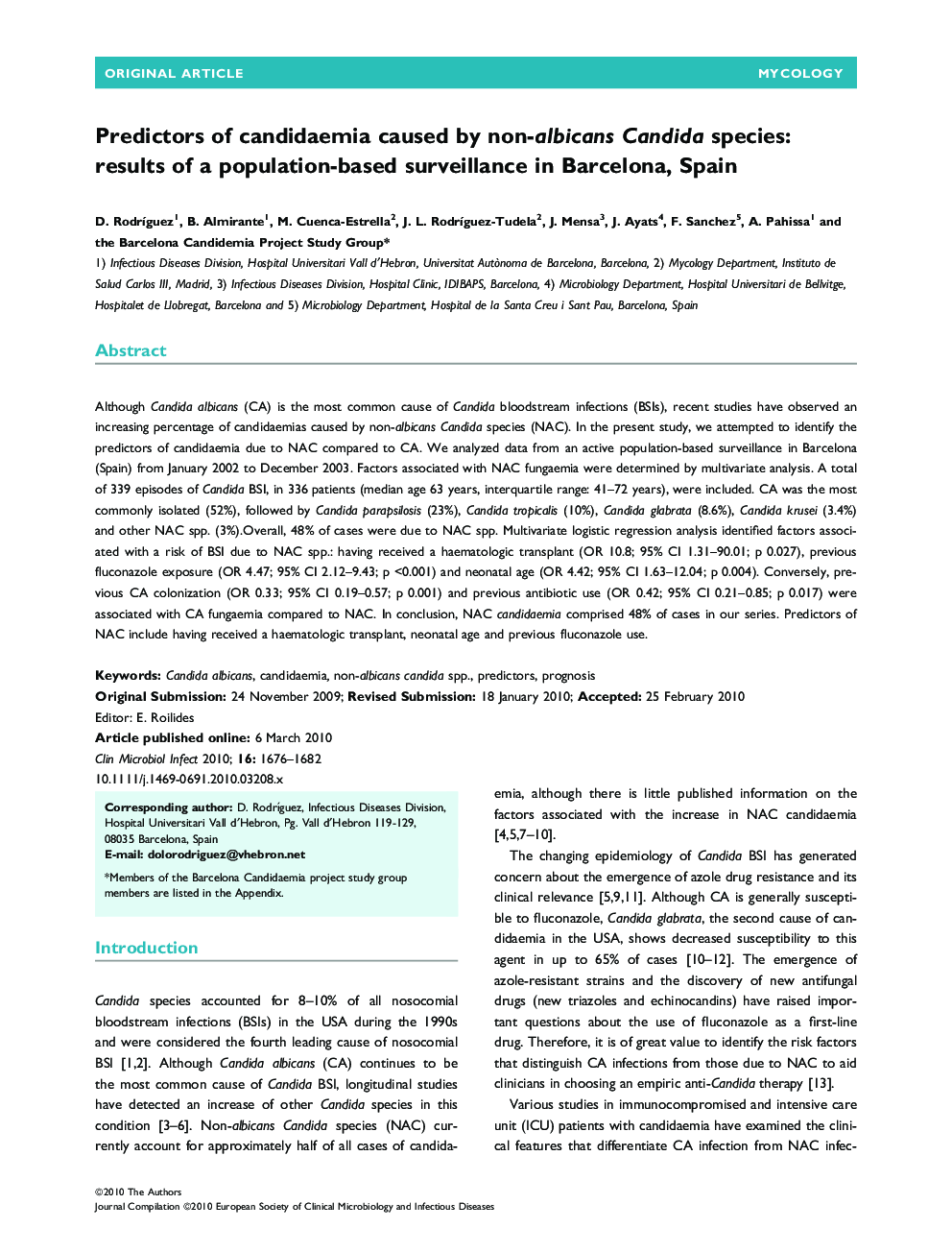| Article ID | Journal | Published Year | Pages | File Type |
|---|---|---|---|---|
| 6131285 | Clinical Microbiology and Infection | 2010 | 7 Pages |
Abstract
Although Candida albicans (CA) is the most common cause of Candida bloodstream Infections (BSIs), recent studies have observed an Increasing percentage of candidaemias caused by non-albicans Candida species (NAC). In the present study, we attempted to identify the predictors of candidaemia due to NAC compared to CA. We analyzed data from an active population-based surveillance in Barcelona (Spain) from January 2002 to December 2003. Factors associated with NAC fungaemia were determined by multivariate analysis. A total of 339 episodes of Candida BSI, in 336 patients (median age 63 years, interquartile range: 41-72 years), were included. CA was the most commonly isolated (52%), followed by Candida parapsilosis (23%), Candida tropicalis (10%), Candida glabrata (8.6%), Candida krusei (3.4%) and other NAC spp. (3%). Overall, 48% of cases were due to NAC spp. Multivariate logistic regression analysis identified factors associated with a risk of BSI due to NAC spp.: having received a haematologic transplant (OR 10.8; 95% CI 1.31-90.01; p 0.027), previous fluconazole exposure (OR 4.47; 95% CI 2.12-9.43; p <0.001) and neonatal age (OR 4.42; 95% CI 1.63-12.04; p 0.004). Conversely, previous CA colonization (OR 0.33; 95% CI 0.19-0.57; p 0.001) and previous antibiotic use (OR 0.42; 95% CI 0.21-0.85; p 0.017) were associated with CA fungaemia compared to NAC. In conclusion, NAC candidaemia comprised 48% of cases in our series. Predictors of NAC include having received a haematologic transplant, neonatal age and previous fluconazole use.
Related Topics
Life Sciences
Immunology and Microbiology
Microbiology
Authors
D. RodrÃguez, B. Almirante, M. Cuenca-Estrella, J.L. RodrÃguez-Tudela, J. Mensa, J. Ayats, F. Sanchez, A. Pahissa, the Barcelona Candidemia Project Study Group the Barcelona Candidemia Project Study Group,
